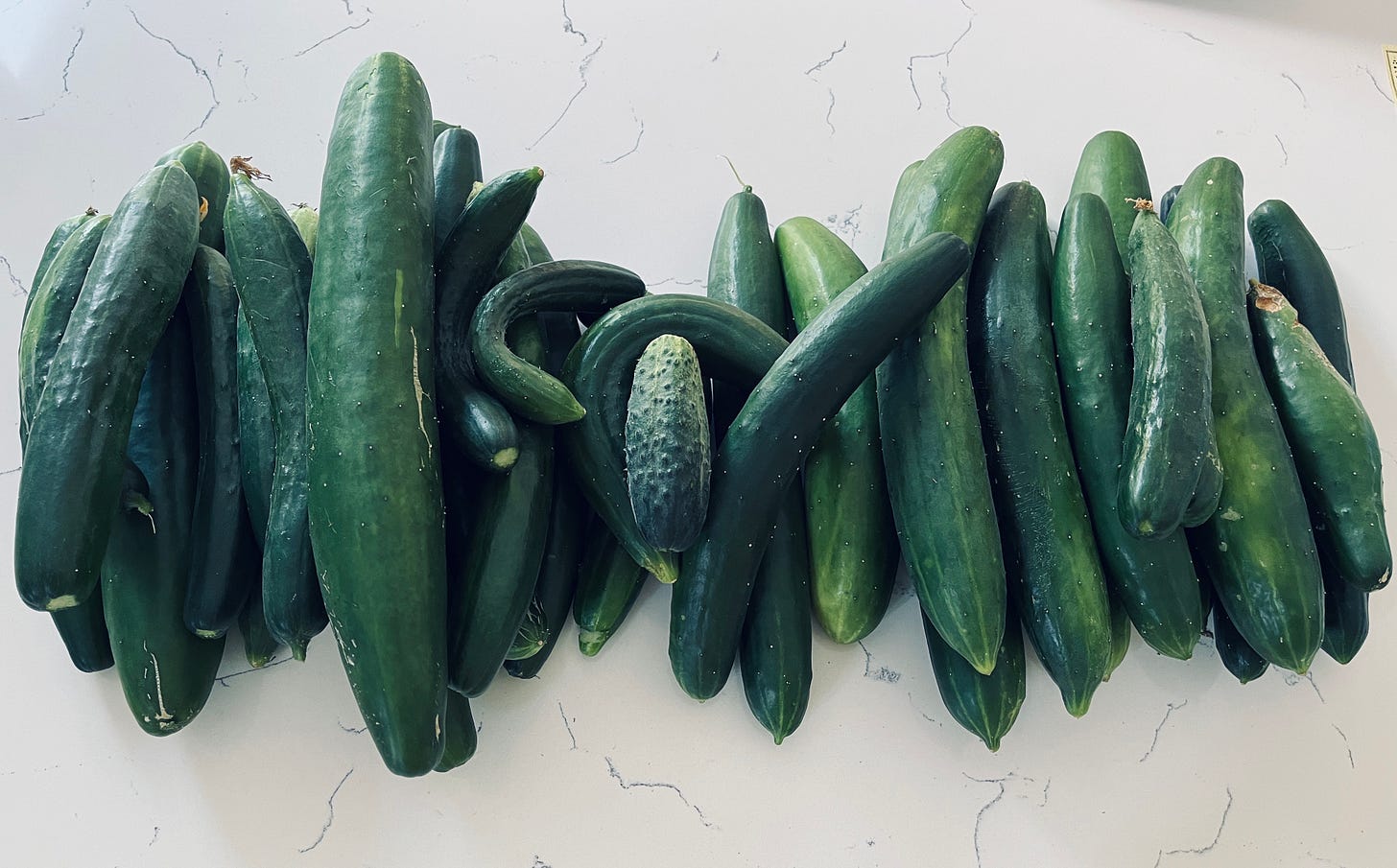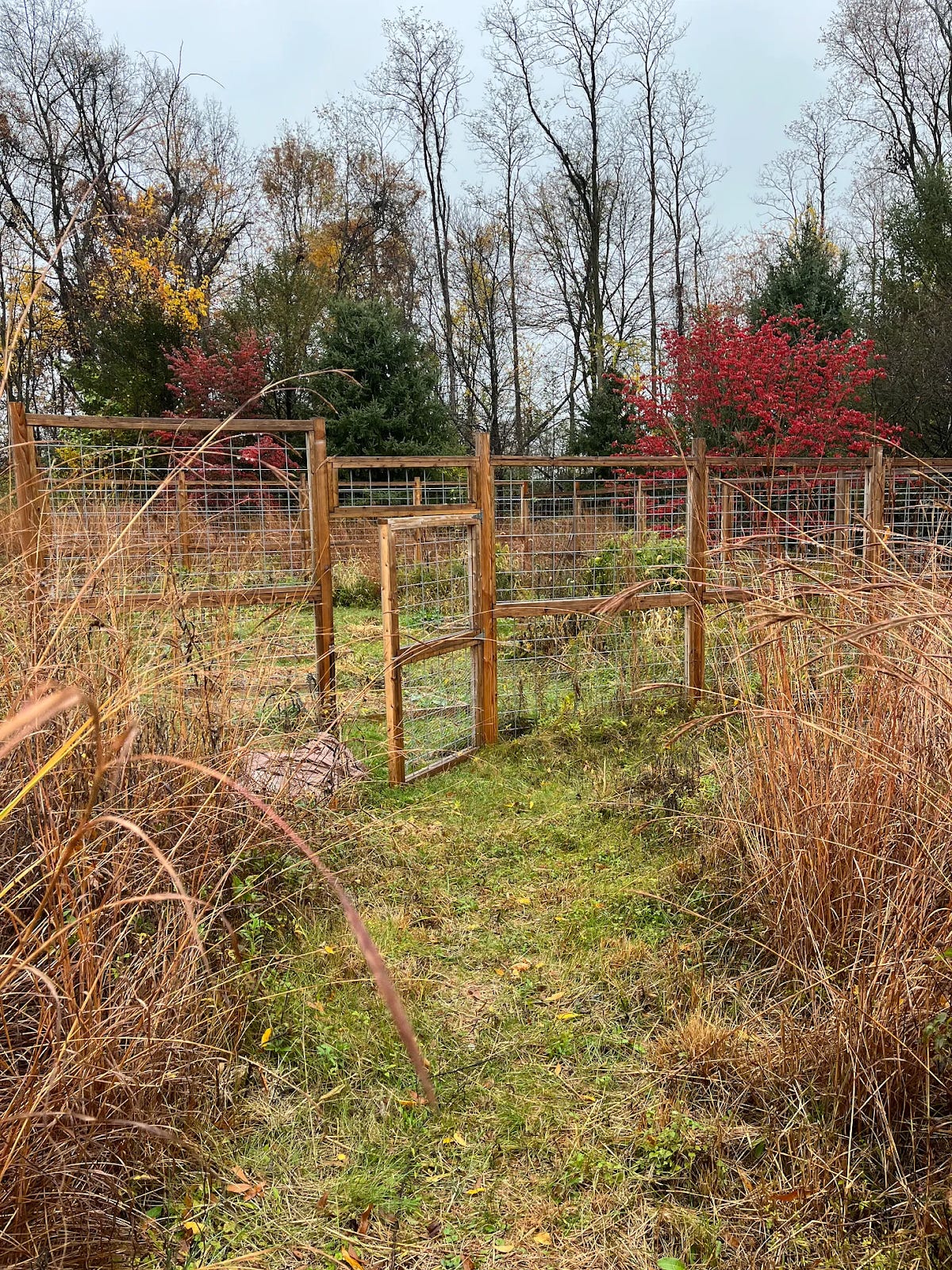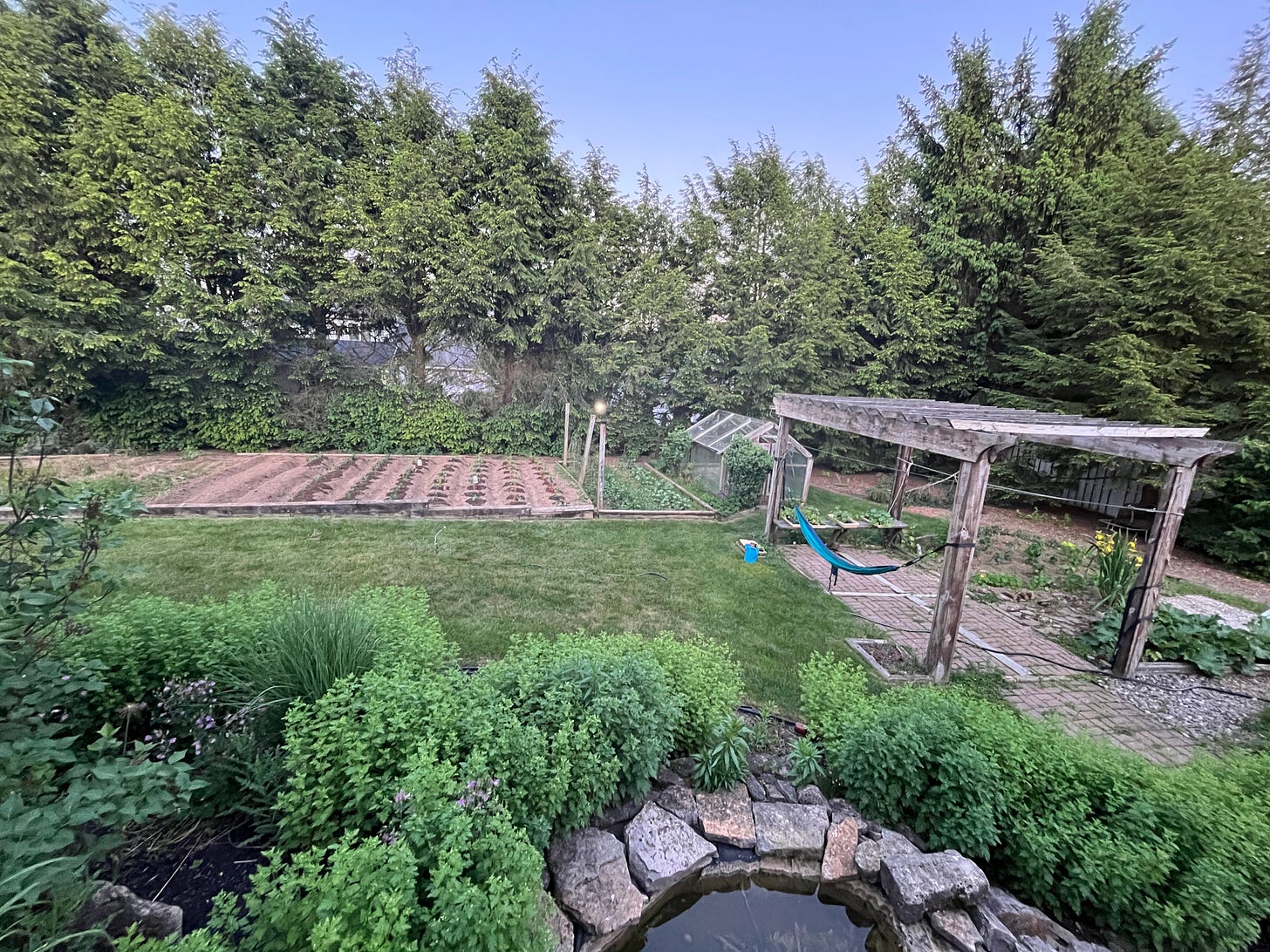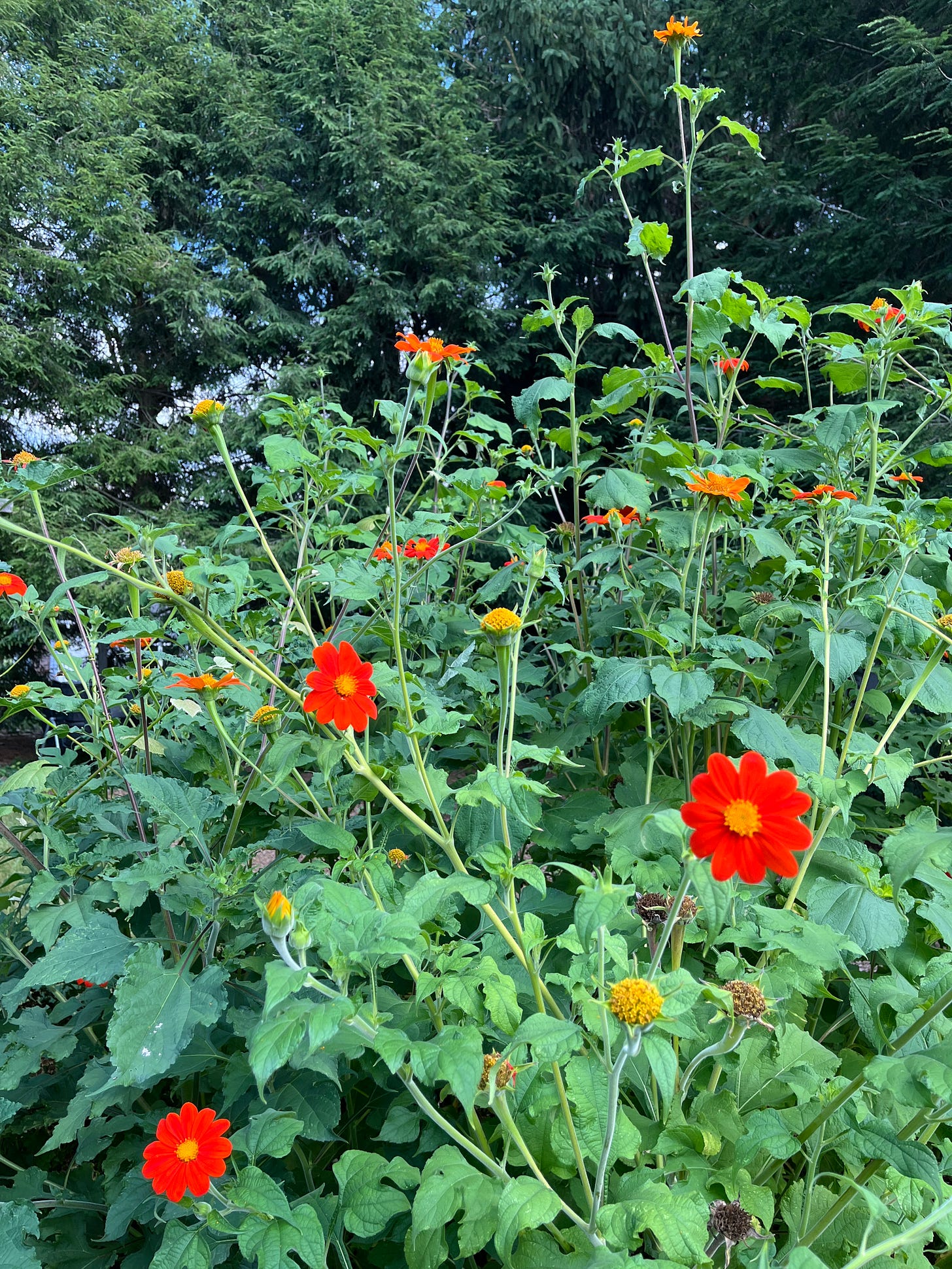A little over a year ago, my ex and I sat down with our children to tell them that we would divorce. It was a heartbreaking day. But this is not an essay about that, not really. It’s about the startling recognition that, more and more, I catch myself feeling happy. Loving my life. Loving my home.
That did not seem possible a year ago. I had spent more than two years trying to will myself into belonging. One form that struggle took was building a large garden with an 8-foot deer fence.
It took a few months to get the design approved (do not get me started on HOAs). Then another three months to build the fence and the raised beds. My daughter helped me plant garlic literally as the first snow flew. At the time, I thought the garden might be the place where I’d heal from my grief, a sanctuary of small beautiful things that I could carry back to my family.
But like nearly everything else about the family move, the garden seemed cursed. A balmy spring lured me into planting broccoli, kale, and other brassicas a couple weeks too soon. Then a hard freeze nearly wiped out the entire crop. The same thing happened with the tomatoes, potatoes, and peppers. Everyone said to wait until Memorial Day, but I thought my professional-grade row covers could buy me a head start. A late frost killed more than forty plants that I’d fattened under my grow lights.
Or so I thought. By the time we sat down for the worst day of our lives as a family, nearly all the plants I thought I had lost were sending up new growth from the roots. I had raised them well, it turned out, and I’d planted them deep enough that the surface attack only knocked them back.
But that metaphor did not fit the moment. All I saw when I looked at the garden was failure. Weeks wasted digging post holes and pouring cement, another month squandered truing rails and wire panels, then recruiting help building the gate and burying chicken wire around the base in a quixotic attempt to keep the groundhogs out.
So as soon as I knew I’d be moving out, I let the garden go to weeds. That was my life. My career. My marriage. Nothing to show for it but crabgrass and thistle. I wanted to crawl into the burrow a groundhog had dug under one of my beds.
It took eight more months to buy a new home. In late December, while touring properties, I walked through the back gate of what is now my garden and could not believe my eyes. Two huge vegetable plots. A koi pond. Even a greenhouse built of salvaged lumber and glass.
I had left four other gardens behind. Every one of those I had dug out of the sod like a homesteader with his mule and plow. But this space had been lovingly tended for more than thirty years. And my tape measure proved that it offered three times the growing area of the beds I had left behind.
I’m not ashamed to say it: I very nearly cried.
It’s been a busy six months of putting the house together, installing bed frames and blinds, arranging furniture, and (ugh) hanging decor. But the garden is the deepest throughline of the year.
From the very start I was dreaming about what I’d do with all that dirt. The grow lights came on in late February, and I took my time hardening the plants, waiting until Memorial Day. I trapped three groundhogs before transplanting a single start. And now, at roughly the halfway point in the growing season, I’m foraging for my meals, pickling and preserving to my heart’s content.
Gardens are good reminders that when we steward it well, our home ground loves us back. As Robin Wall Kimmerer says in Braiding Sweetgrass, “Knowing that you love the earth changes you, activates you to defend and protect and celebrate. But when you feel that the earth loves you in return, that feeling transforms the relationship from a one-way street into a sacred bond.”
I need that garden love more than I can say.
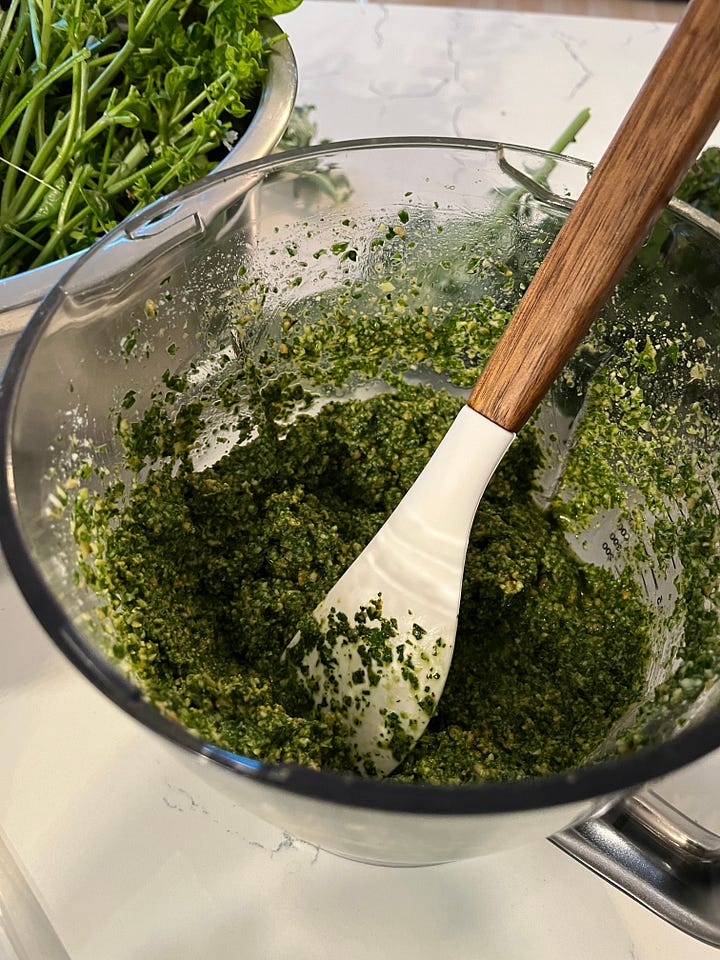

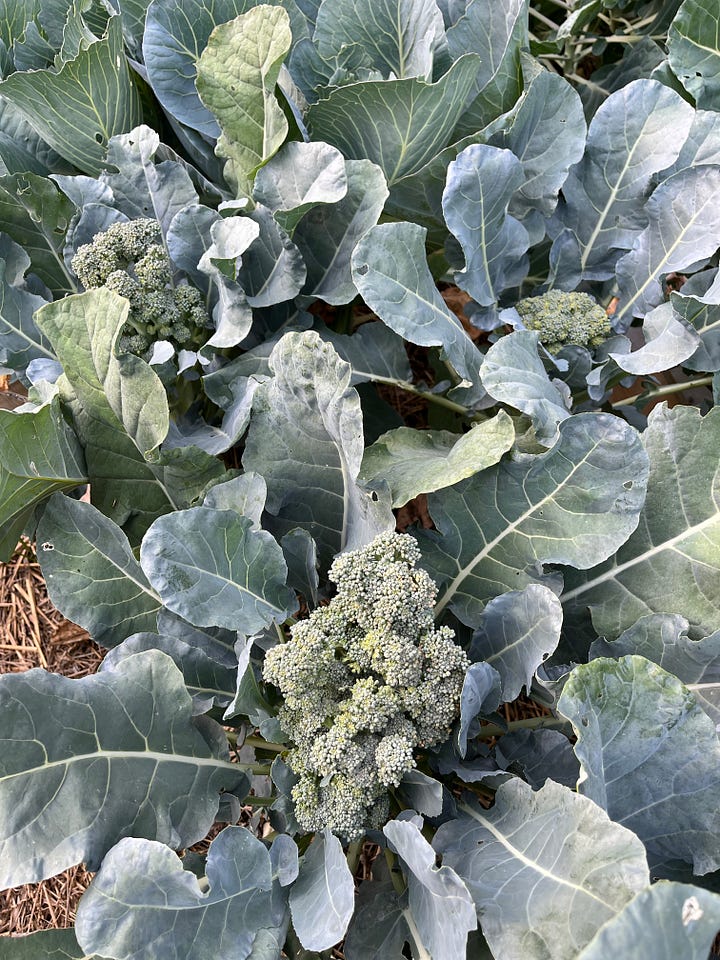
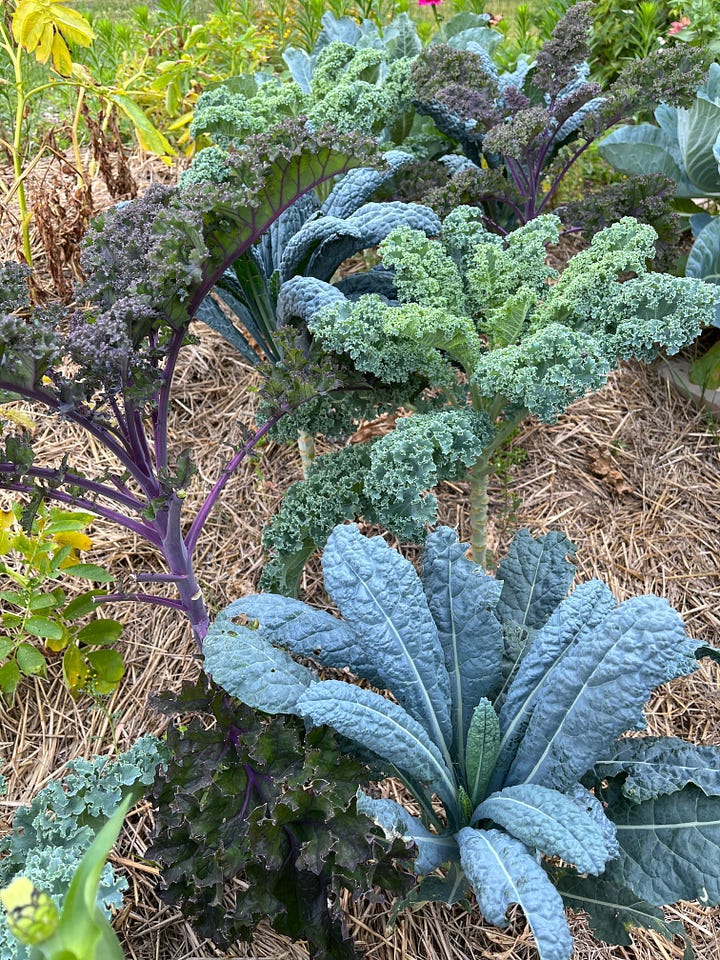
It’s hard to write about happiness. Stories thrive on conflict, protagonist and antagonist, peak and valley. Pain demands our attention, and often it’s the haunting memories that we want to pull back into the light, not the times when we felt content. Sickness makes us yearn for wholeness, but then it takes effort to remain conscious of health once it’s restored. There’s not much to say about the pleasure of shade on the back porch, the smell of sage and basil, or the taste of fresh zucchini steamed with butter.
I’m still crawling out of the rubble of my life. But the garden helps me feel that I’m getting somewhere. With the help of the sun and some rain, I’ve turned bare dirt into beautiful things. And some of those things, like my kale, parsley, and basil, have been transformed into edible wealth: 18 bags of pesto in the freezer and counting. Tithonia (Mexican Sunflower) has been a gorgeous addition this year.
Recipes are one way to write about happiness. “Come and taste a little of the summer,” Greg Brown sings. “My grandma put it all in jars.” So I want to close with a few pro tips for pickling that I learned from my mother.
Here’s how to catch some of that happiness and keep it on your shelf.




